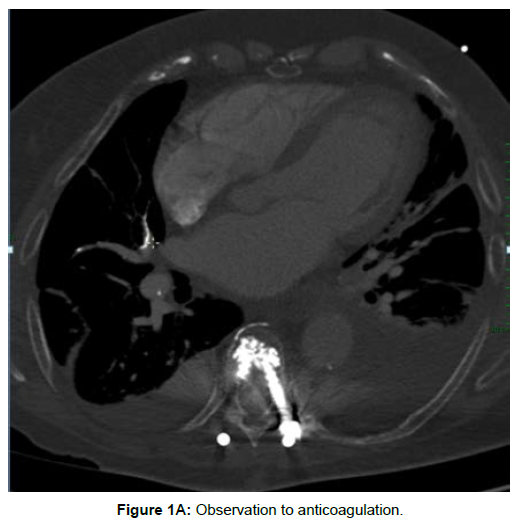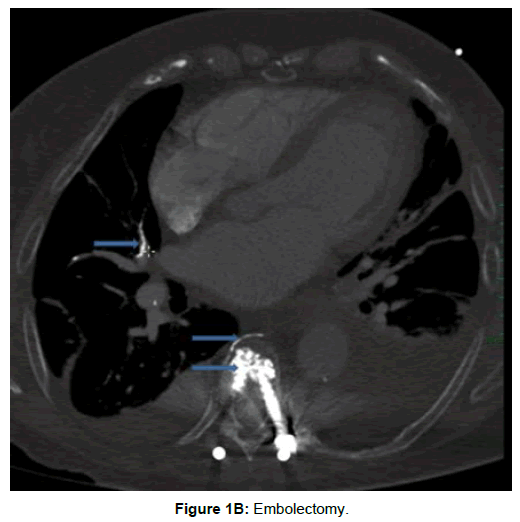Clinical Image, J Clin Image Case Rep Vol: 1 Issue: 2
Pulmonary Cement Emboli
Barakat Elie*
Department of Radiology, Cliniques Universitaires Saint-Luc, Belgium
*Corresponding Author : Barakat Elie
Department of Radiology, Cliniques Universitaires Saint-Luc, Avenue Broustin 44, Brussels 1090, Belgium
Tel: 032488452428
E-mail: elie_barakat87@hotmail.com
Received: November 14, 2017 Accepted: December 06, 2017 Published: December 13, 2017
Citation: Elie B (2017) Pulmonary Cement Emboli. J Clin Image Case Rep 1:2.
Abstract
A 66-years-old man presenting with progressive dyspnea underwent a chest CT with contrast. Reconstructed images on bone window, incidentally show hyperdense tubular structures in the right pulmonary arteries (mainly middle lobe arteries), and in the prevertebral space as well as hyperdense material in the vertebral bodies corresponding to pulmonary cement embolism and extruded cement in a prevertebral vein secondary to a vertebroplasty done 12 years ago.
Keywords: Embolectomy; Pulmonary Cement Embolism
Clinical Image
A 66-years-old man presenting with progressive dyspnea underwent a chest CT with contrast. Reconstructed images on bone window, incidentally show hyperdense tubular structures in the right pulmonary arteries (mainly middle lobe arteries), and in the prevertebral space as well as hyperdense material in the vertebral bodies corresponding to pulmonary cement embolism and extruded cement in a prevertebral vein secondary to a vertebroplasty done 12 years ago.
Pulmonary cement embolism refers to embolisation of cement (polymethyl methacrylate) that is used in vertebroplasty into the pulmonary arteries. Embolisation is secondary to cement leakage into the basivertebral veins mostly caused by applying too much pressure while injecting the material of the injection of polymethyl methacrylate that is still too liquid. Cement is highly attenuated and easily detected by CT imaging as tubular dense structures in epidural veins, cardiac chambers, pulmonary arteries or any other venous structures.
Patients are often asymptomatic and cement emboli are often detected incidentally on imaging done for another reason. Depending on clinical presentation, treatment ranges from observation to anticoagulation to embolectomy (Figures 1A and 1B).
 Spanish
Spanish  Chinese
Chinese  Russian
Russian  German
German  French
French  Japanese
Japanese  Portuguese
Portuguese  Hindi
Hindi 

